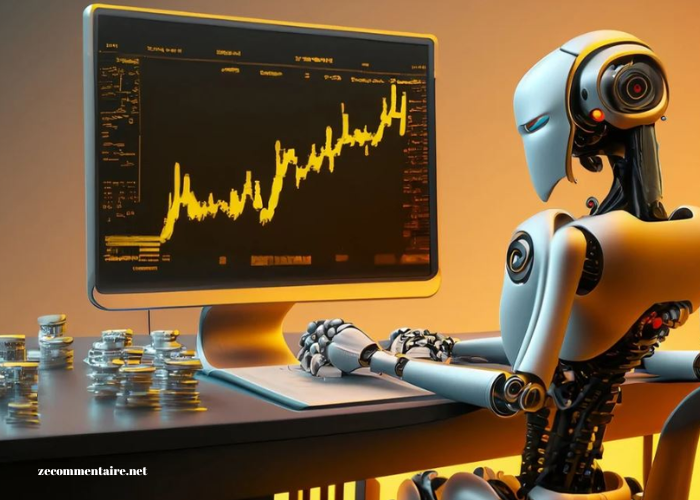In the fast-paced world of foreign exchange (Forex) trading, where fortunes can be made or lost in the blink of an eye, having a competitive edge is paramount. One avenue that has gained increasing prominence in recent years is the utilization of big data analytics in Forex robot strategies. These automated systems, powered by vast amounts of data and sophisticated algorithms, aim to decipher market trends, identify profitable opportunities, and execute trades with precision. In this article, we delve into the transformative potential of big data analytics in Forex robot strategies, exploring how it unlocks market insights and enhances trading performance.
The Evolution of Forex Trading
Forex trading has evolved significantly over the years, from manual trading conducted by human traders to the advent of algorithmic trading and, more recently, the rise of Forex robots. Traditional trading methods relied heavily on human intuition, market analysis, and emotional decision-making. However, with the advancement of technology, traders have increasingly turned to automated systems to execute trades based on predefined criteria and algorithms.
The Role of Big Data Analytics
At the heart of modern Forex robot strategies lies big data analytics. The Forex market generates vast amounts of data every second, including price movements, trading volumes, economic indicators, news events, and social media sentiment. Big data analytics enables Forex robots to sift through this deluge of information, extract meaningful patterns and correlations, and make data-driven decisions in real-time.
By leveraging big data analytics, Forex robots can analyze historical market data to identify recurring patterns and trends, detect anomalies, and anticipate market movements with a higher degree of accuracy. Moreover, they can incorporate alternative data sources, such as satellite imagery, consumer sentiment indices, and web scraping data, to gain additional insights into market dynamics.
Extracting Market Insights
One of the primary advantages of employing big data analytics in Forex robot strategies is the ability to extract actionable market insights. These insights go beyond simple technical analysis indicators and provide a deeper understanding of market behavior and sentiment.
For example, sentiment analysis algorithms can analyze news articles, social media posts, and other textual data to gauge market sentiment and investor sentiment towards specific currency pairs. By incorporating sentiment analysis into their algorithms, Forex robots can adjust their trading strategies accordingly, capitalizing on bullish or bearish market sentiment.
Furthermore, machine learning algorithms can identify complex patterns and relationships within the data that may not be apparent to human traders. Through techniques such as clustering, classification, and regression, Forex robots can uncover hidden opportunities and mitigate risks more effectively.
Enhancing Trading Performance
The ultimate goal of utilizing big data analytics in Forex robot strategies is to enhance trading performance and profitability. By making data-driven decisions based on a comprehensive analysis of market data, Forex robots can execute trades with greater precision and timing, reducing the impact of human emotions and cognitive biases.
Moreover, big data analytics enables Forex robots to adapt to changing market conditions in real-time. They can continuously learn from past trades, adjust their strategies based on evolving market dynamics, and optimize their performance over time.
Challenges and Considerations
Despite its potential benefits, integrating big data analytics into Forex robot strategies presents several challenges and considerations. Firstly, the sheer volume and velocity of data generated by the Forex market can overwhelm traditional data processing and storage systems. Forex robots must have robust infrastructure and scalable architectures to handle large-scale data processing in real-time.
Secondly, ensuring the accuracy and reliability of the data is crucial for making informed trading decisions. Data quality issues, such as missing values, inaccuracies, and biases, can lead to erroneous conclusions and suboptimal trading outcomes. Therefore, Forex robots must employ rigorous data validation and cleansing techniques to mitigate these risks.
Thirdly, the rapid pace of technological advancements and regulatory changes in the Forex market necessitate continuous innovation and adaptation. Forex robot developers must stay abreast of the latest developments in big data analytics, machine learning, and regulatory compliance to maintain their competitive edge.
Conclusion
In conclusion, big data analytics has emerged as a game-changer in Forex robot strategies, unlocking unprecedented market insights and enhancing trading performance. By harnessing the power of big data and advanced analytics techniques, Forex robots can navigate the complexities of the Forex market with agility and precision, enabling traders to capitalize on profitable opportunities and mitigate risks more effectively.
However, realizing the full potential of big data analytics in Forex trading requires overcoming various challenges and considerations, from data management and quality assurance to technological innovation and regulatory compliance. Nonetheless, the transformative impact of big data analytics in Forex robot strategies is undeniable, heralding a new era of data-driven trading in the global currency markets.




